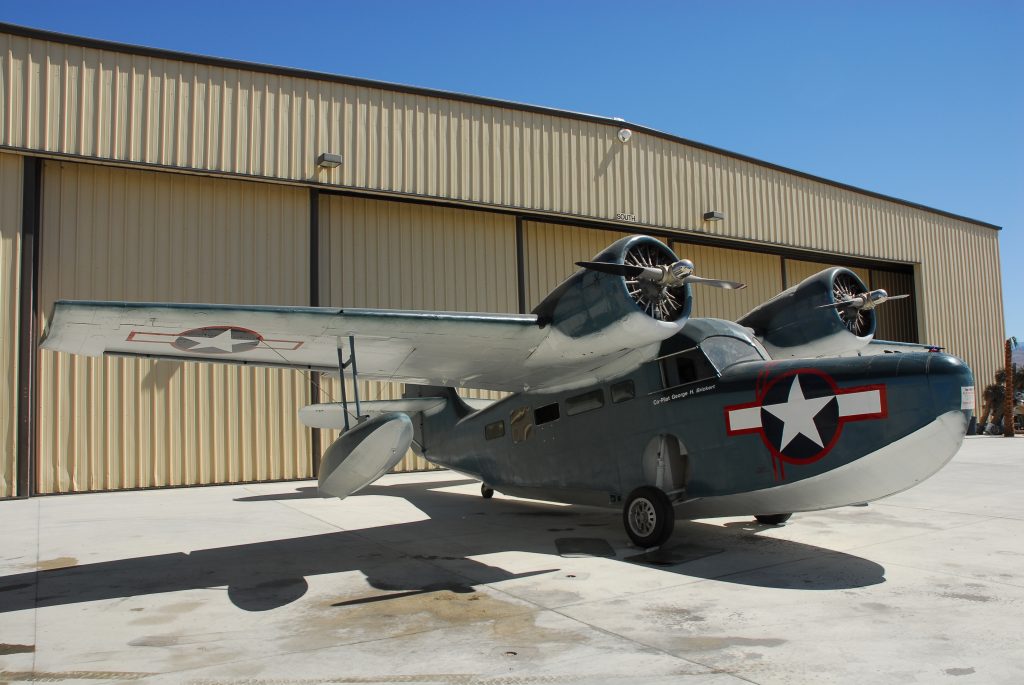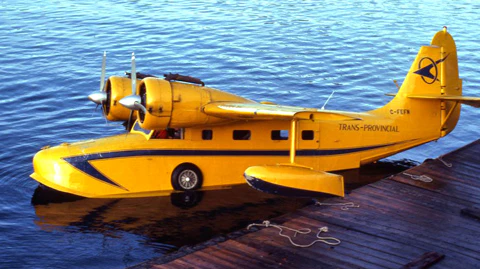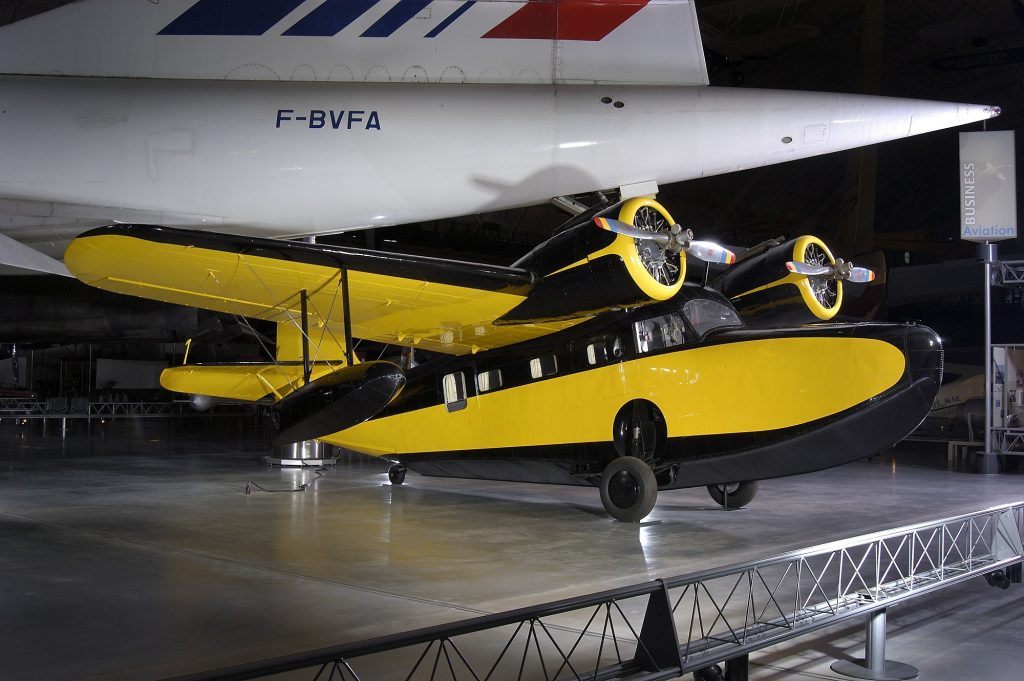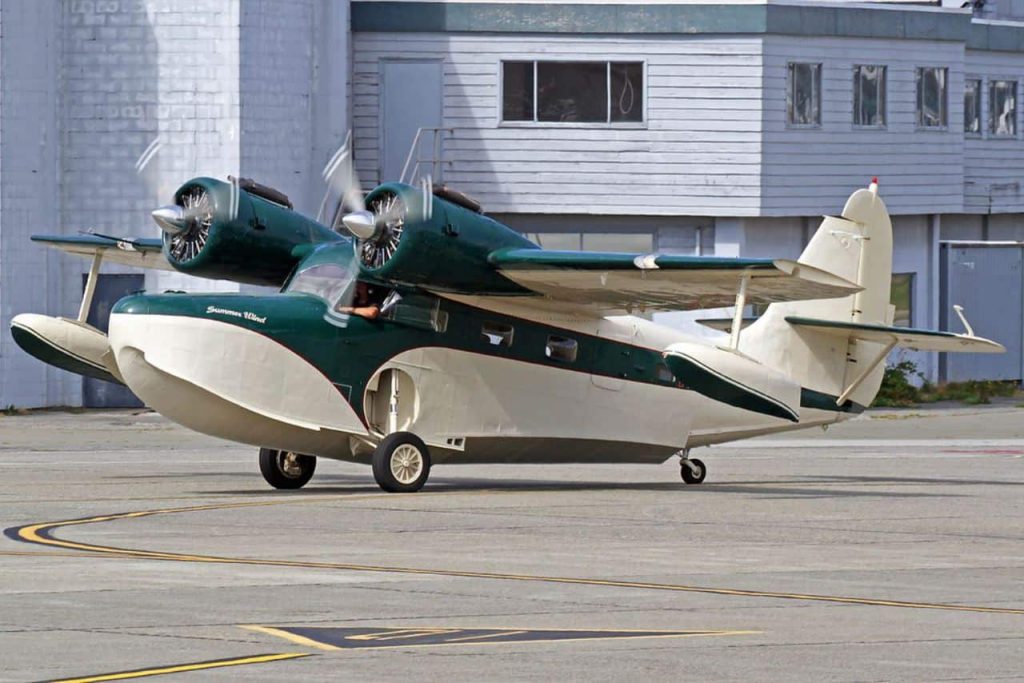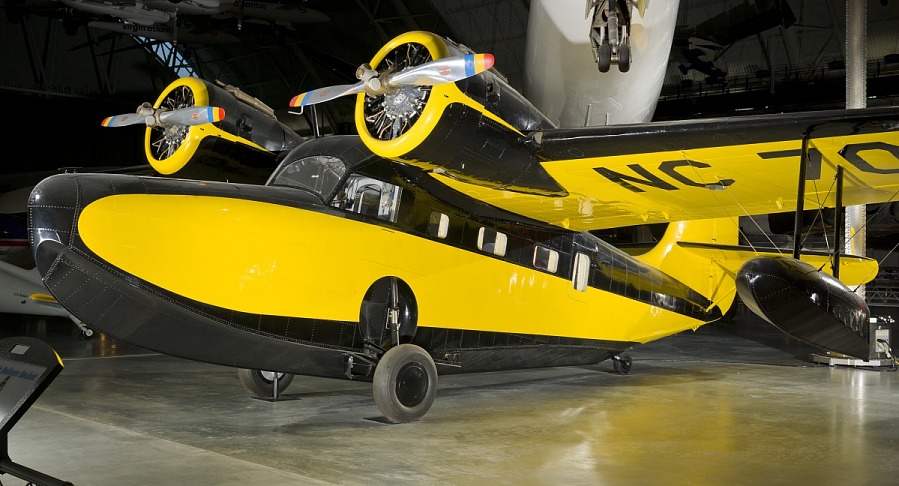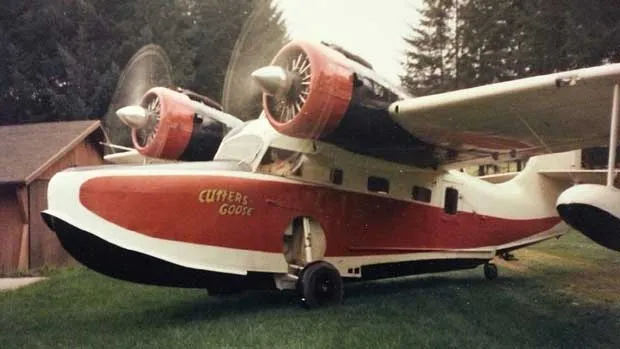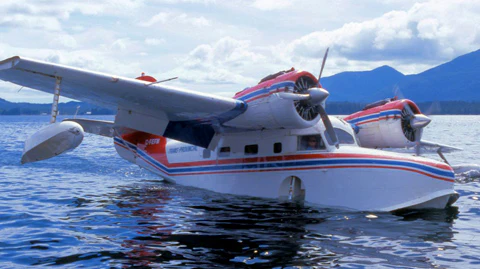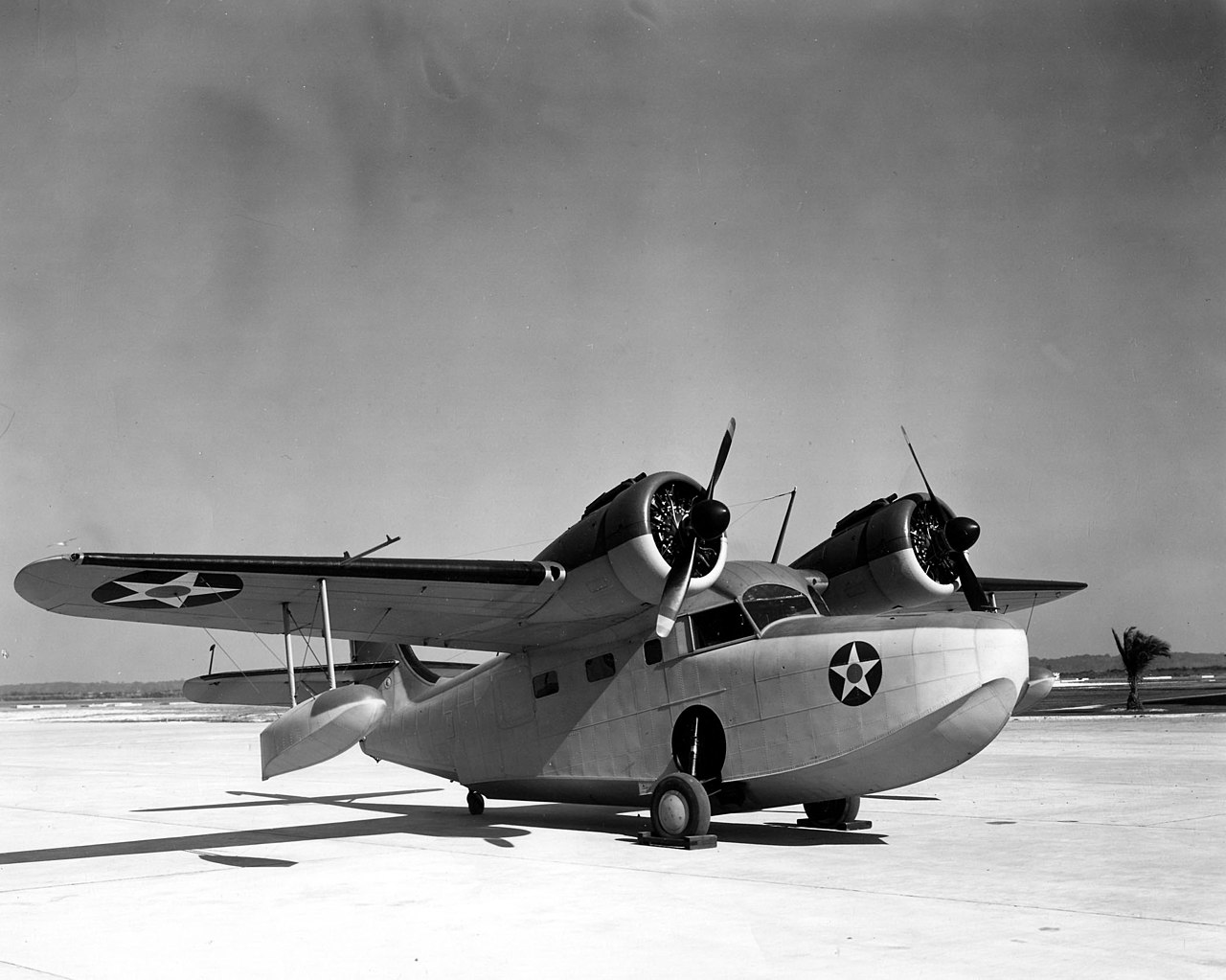The Grumman G-21 Goose is an iconic amphibious aircraft that holds a significant place in aviation history. Developed in the late 1930s, the Goose was Grumman’s first monoplane and their first aircraft to be used in a commercial role. Here’s a detailed history of the Grumman G-21 Goose:
Development and Introduction:
- 1936: The G-21 Goose was originally designed as an eight-seat “flying boat” for wealthy businessmen who sought an aircraft that could serve as a commuter plane to access remote locations. The design featured an amphibious capability, allowing it to land both on water and on conventional runways, which was particularly appealing for operations in rugged, isolated regions.
- 1937: The Goose made its first flight on May 29, 1937. It was powered by two Pratt & Whitney Wasp Junior radial engines, each producing 450 horsepower. The aircraft had a high-wing configuration with a robust, boat-shaped fuselage that enabled water landings and takeoffs.
- 1938: The Grumman G-21 Goose entered production and quickly gained popularity among private owners, commercial operators, and even military forces. Its versatility, reliability, and ability to operate in a variety of environments made it a valuable asset.
World War II Service:
- 1940s: During World War II, the Goose was adapted for military use by several countries. The U.S. Navy, U.S. Coast Guard, and U.S. Army Air Forces used the aircraft for various roles, including transport, reconnaissance, air-sea rescue, and anti-submarine warfare. The military versions of the Goose were often equipped with machine guns, depth charges, and other military equipment.
- The Goose served in many theaters of war, including the Pacific, where its amphibious capabilities were particularly useful for operating in the island-hopping campaigns. Its ability to land on water allowed it to perform search and rescue missions, often saving downed pilots and stranded personnel.
Post-War Civilian Use:
- Post-War Era: After World War II, many surplus Grumman G-21 Gooses were sold to civilian operators. The aircraft became popular in remote regions such as Alaska, Canada, and the Caribbean, where its amphibious nature was highly valued for accessing areas without established airstrips.
- The Goose was used by various airlines, charter services, and private operators for passenger transport, cargo hauling, and special missions like aerial photography and surveying. Its rugged design and ability to operate in harsh conditions made it a favorite among bush pilots and remote operators.
Later Years and Legacy:
- Modifications and Variants: Over the years, several modifications and upgrades were made to the Goose. Some were fitted with more powerful engines, and others were converted into executive transports with luxurious interiors. A number of Gooses were also fitted with turboprop engines, further extending their operational life.
- Surviving Aircraft: Although production of the Goose ended in 1945, many of these aircraft continued to be in service well into the late 20th century and even beyond. Some Gooses have been preserved and restored by museums and private collectors, while a few are still flying today, often in a vintage or heritage role.
- Cultural Impact: The Goose has appeared in various films, television shows, and books, often depicted as a rugged and reliable aircraft capable of adventure and exploration. Its distinctive design and amphibious capability have made it an enduring symbol of mid-20th century aviation.
Specifications:
- Crew: 2 (pilot and co-pilot) with seating for 6-8 passengers.
- Engines: Two Pratt & Whitney R-985 Wasp Junior radial engines.
- Performance: A top speed of around 201 mph, a range of about 640 miles, and a service ceiling of 21,300 feet.
- Dimensions: A wingspan of 49 feet, a length of 38 feet, and a height of 12 feet 4 inches.
Conclusion:
The Grumman G-21 Goose is a legendary aircraft that played a significant role in both civilian and military aviation history. Its design, which combined rugged construction with amphibious versatility, allowed it to thrive in environments where other aircraft could not operate. The Goose’s legacy continues to be celebrated by aviation enthusiasts, with several aircraft still being flown or displayed around the world.
